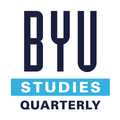About Us

John W. Welch
This chiasmus website was produced by John W. Welch, professor of law at the J. Reuben Clark Law School.
Welch was introduced to chiasmus in Regensburg, Germany, when as a Mormon missionary he attended a lecture series by a Catholic priest. The topic was the literature of the New Testament. The lecturer mentioned a new book by Paul Gaechter, Die literarische Kunst im Matthäus-Evangelium (The Literary Art in the Gospel of Matthew), which Welch bought and studied.
Gaechter introduced the idea of parallelism and argued that it was especially important to the Hebrews because in their culture oral transmission was important and parallelism helps people memorize. Jesus had spoken in what Gaechter called the “the higher form of Jewish instruction,” and that Matthew had written what Gaechter called “closed forms” or defined units, many of which were symmetrically constructed with an a-b-a arrangement. This symmetry, he wrote, “progresses to chiasmus,” an a-b-c-d-c-b-a pattern. In his summation, Gaechter made some strong statements: “The recognition of closed form leads to important conclusions. For one thing, the originator of closed forms was not a Greek but a Hebrew, for the arrangement of a literary (non-poetical, narrative) piece in this form can only be understood as coming from a Semitic sphere.” Thus, he wrote, “behind our gospel of Matthew lies a Semitic original source” (page 9). From Gaechter’s many examples, there seemed to be no doubt that Matthew in fact used chiasmus and that it was more Hebraic than Greek in nature.
Discovery of Chiasmus in the Book of Mormon
John W. Welch discovered the first instance of chiasmus in the Book of Mormon in 1967. While a missionary for the LDS church in Regensburg, Germany, John Welch studied Mosiah 5:10-12. Because of previous exposure to the ancient literary device, John Welch correctly identified Mosiah 5:10-12 as a chiasmus, and thence began a life-work. This video goes through the remarkable story of how John Welch first made this discovery, and what has become of chiasmus study since.

Stephen Kent Ehat
Some number of bibliographical entries on this chiasmus website have been contributed by Stephen Kent Ehat over the years. Ehat is a family genealogist, an attorney at law, and a student of chiasmus. Ehat first learned of chiasmus when John W. Welch published his article "Chiasmus in the Book of Mormon" (New Era, February 1972), and Ehat has been a student of chiasmus ever since. Outside of his family and religious duties, he has devoted much of his life to family history research and was both amused and somewhat sobered in the 1970s to see references to young school children listed in the 1901 Irish census as "scholars." Of course, they indeed were "scholars" — they attended school! Ehat considers himself at least a "scholar" of chiasmus in that simple sense—a student of the rhetorical device and of its uses and beauties, especially in scripture—and he has been ever grateful for insights and perspectives provided by awareness of the pattern where it appears.
Website created by BYU Studies staff, Brigham Young University, Provo, Utah. Contact the webmaster at byustudies2@byu.edu or 801-422-6691.
